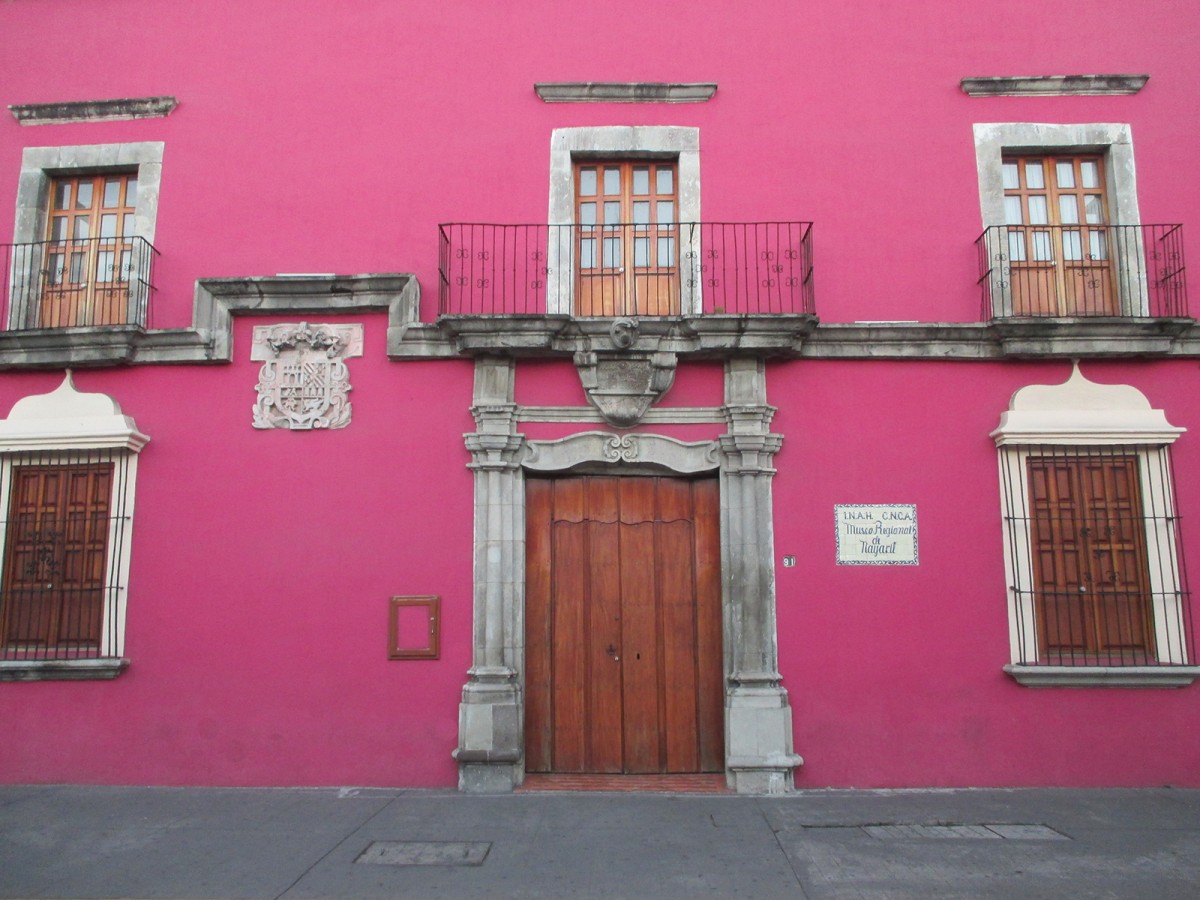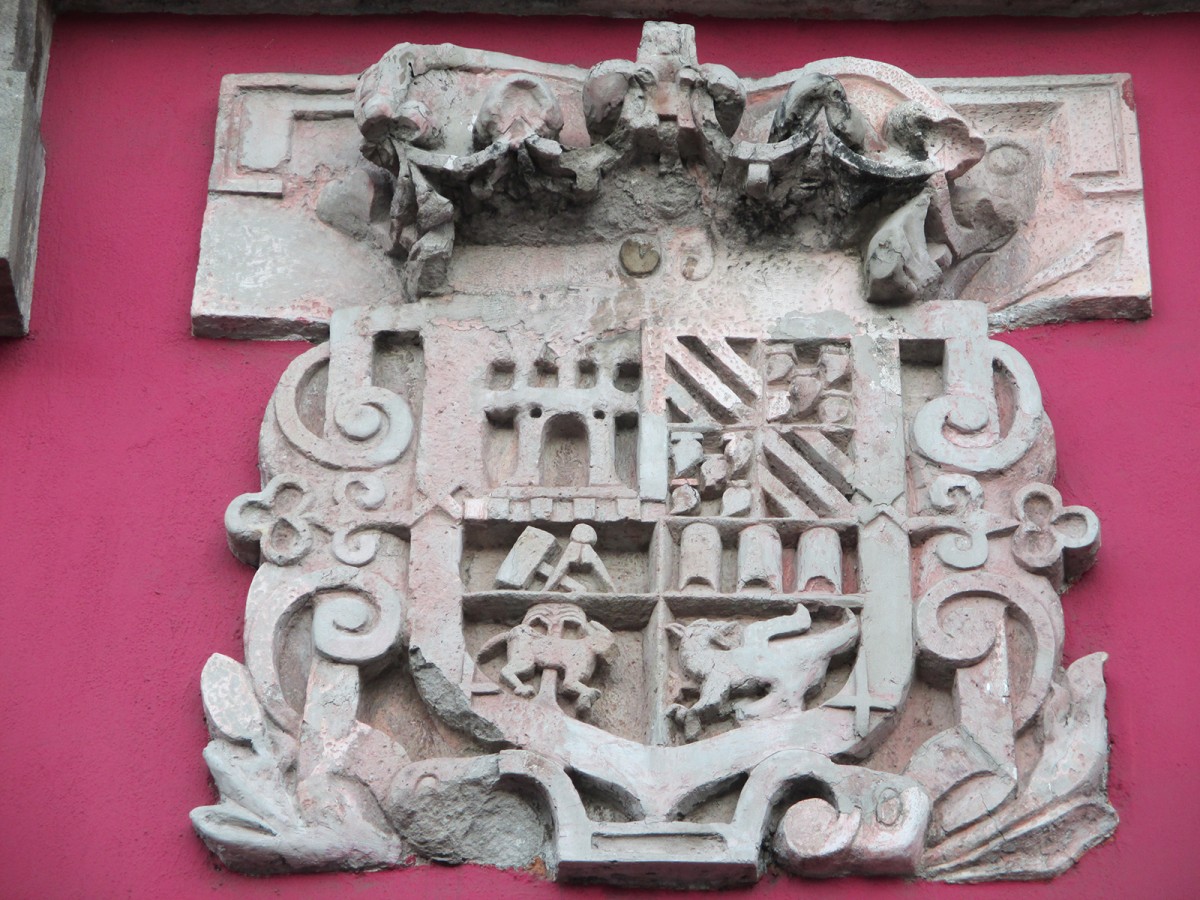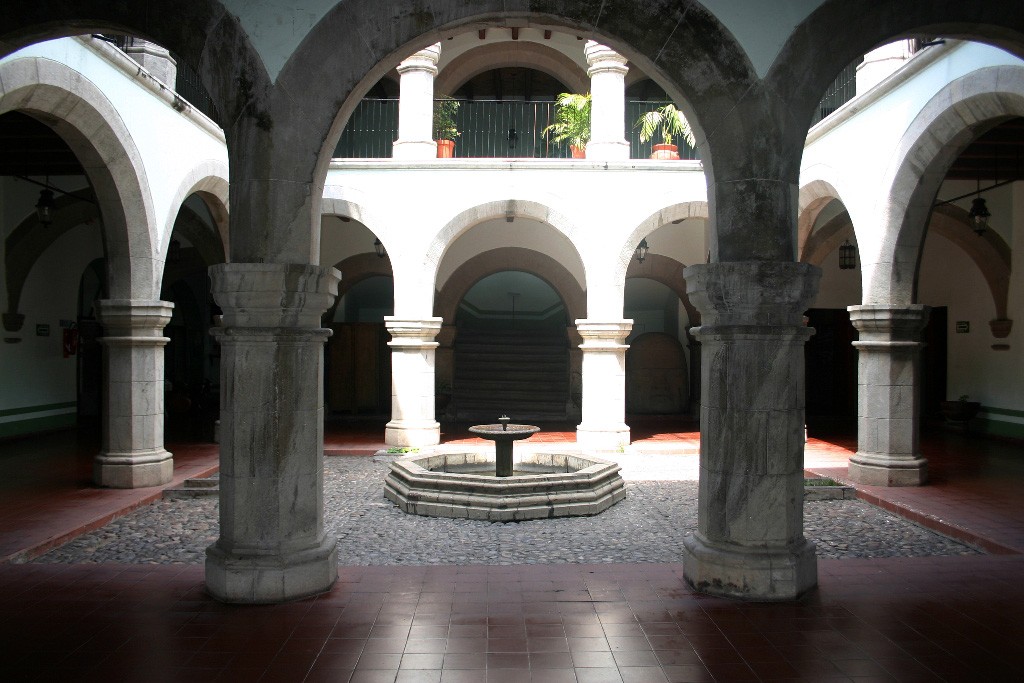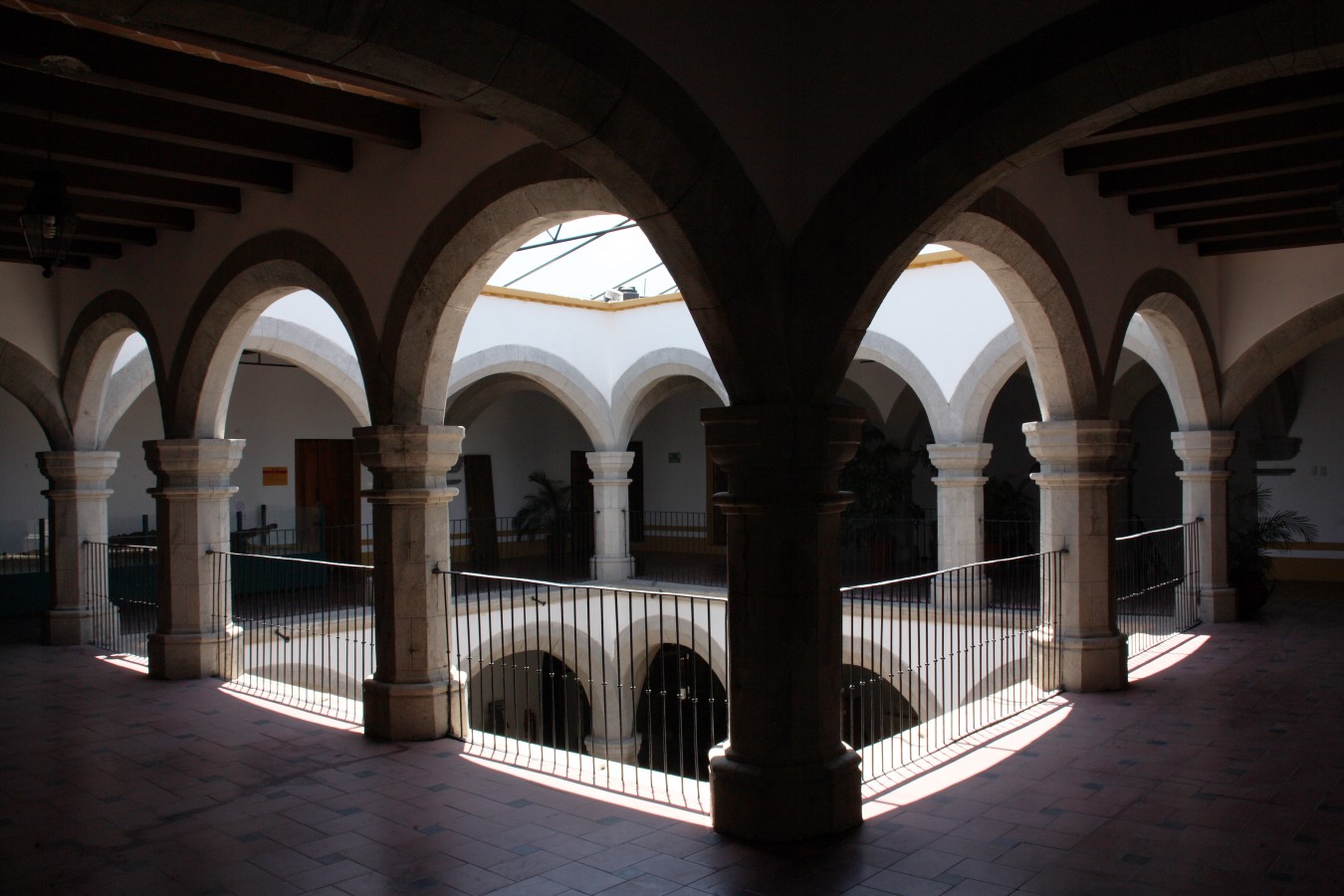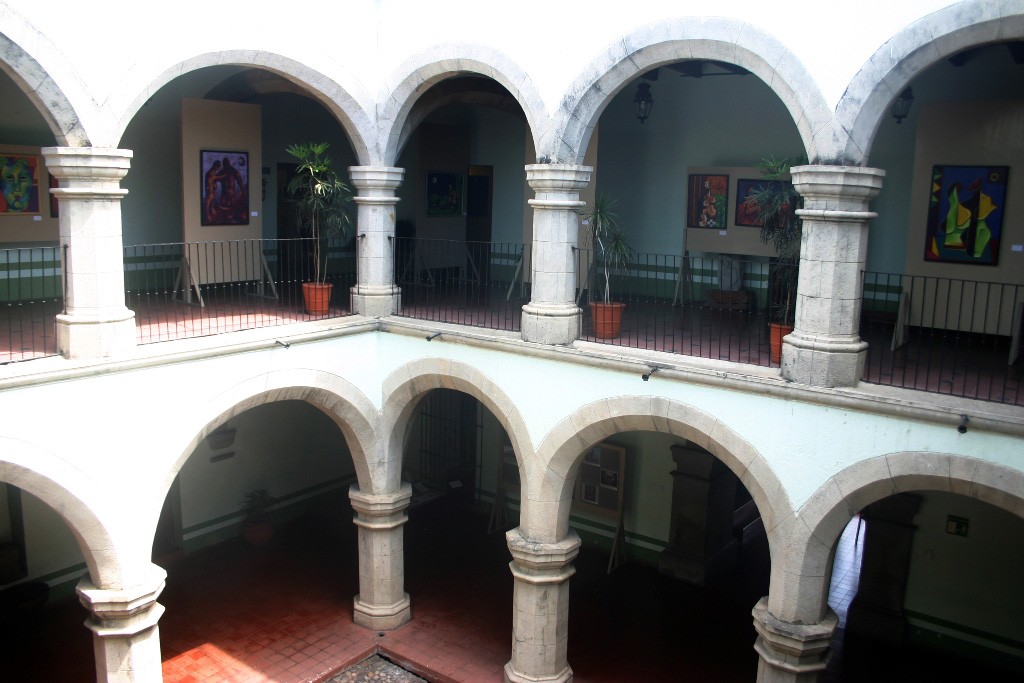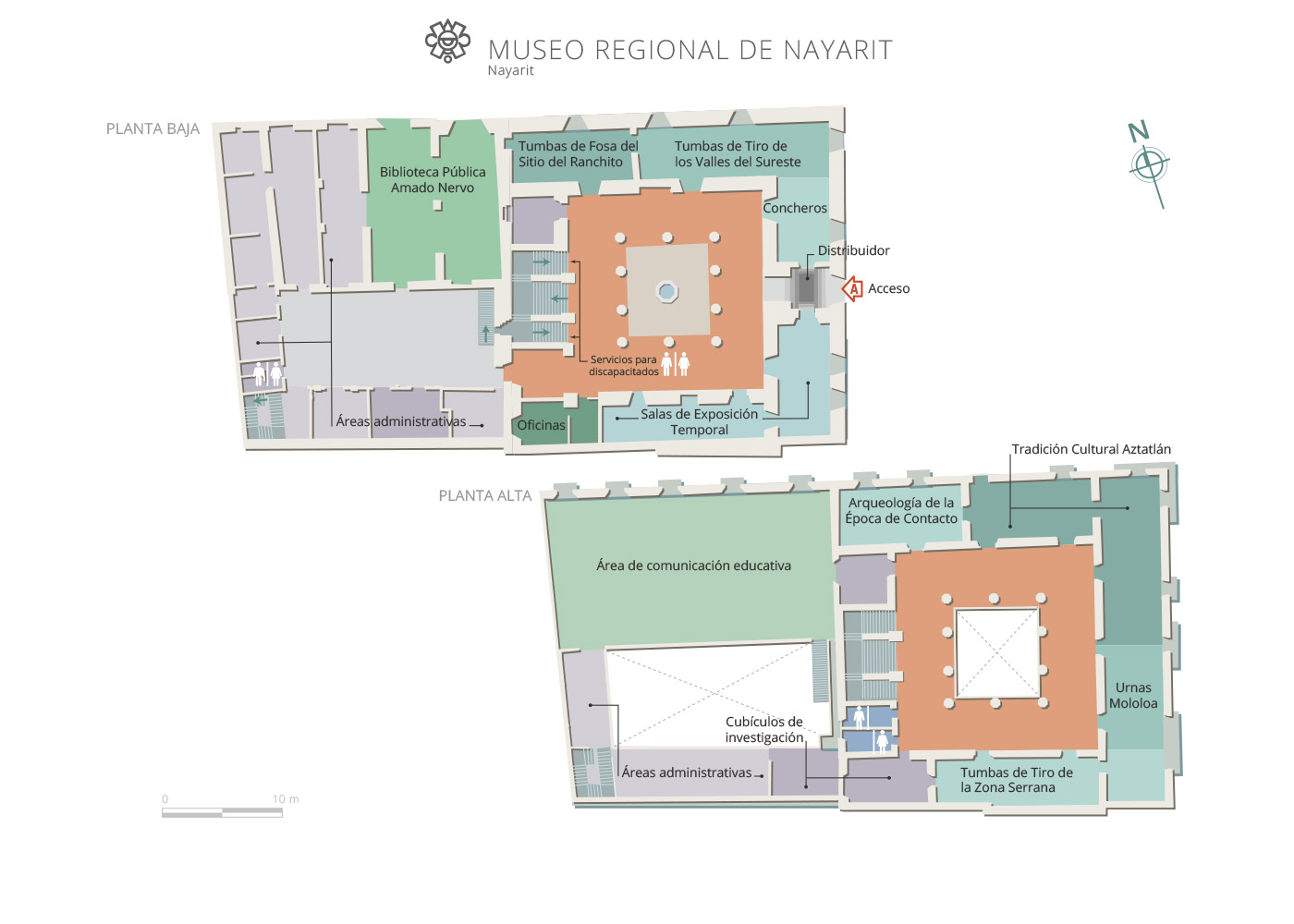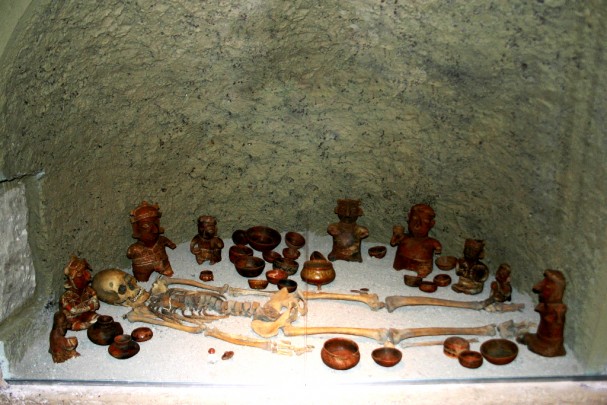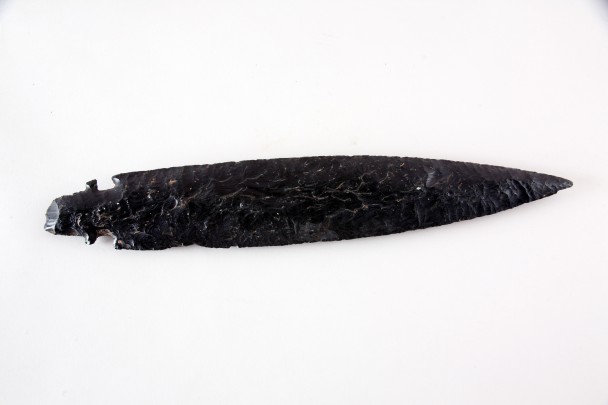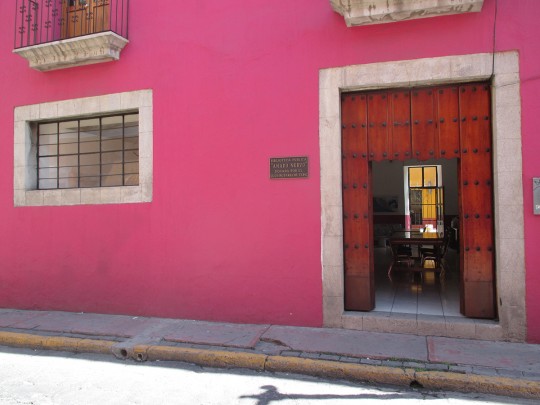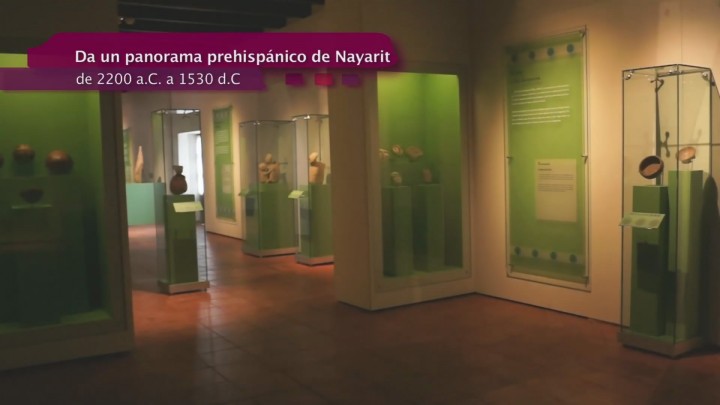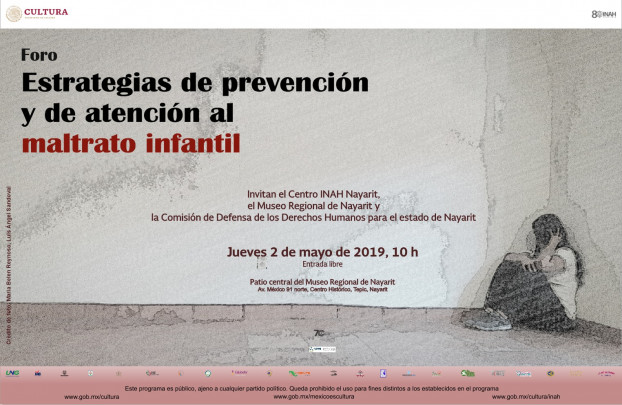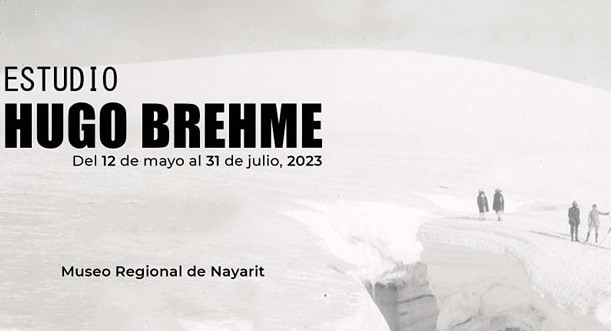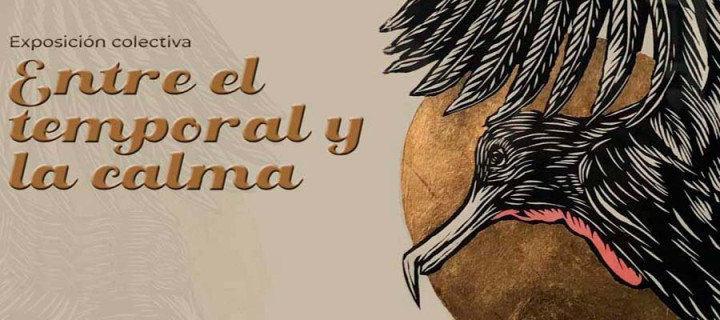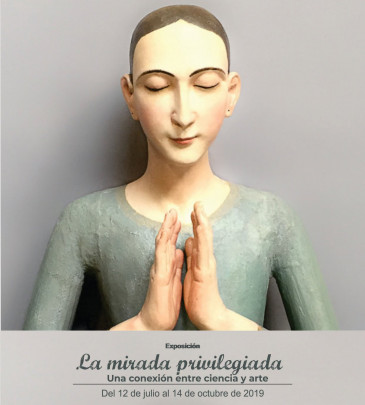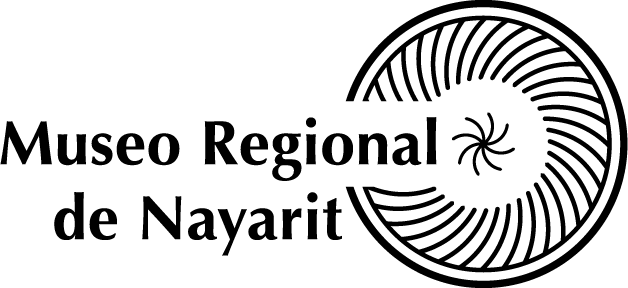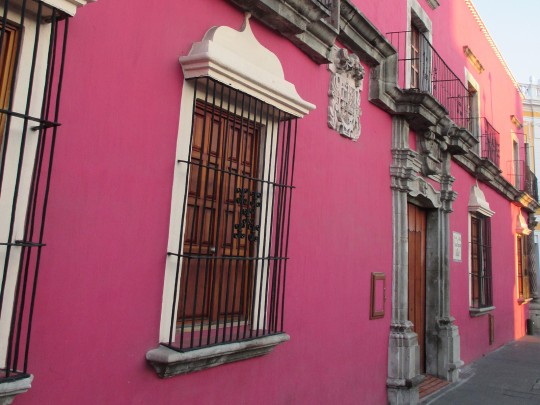Museo Regional de Nayarit
An eighteenth-century stately home in Tepic which houses a vast and revealing collection of pre-Hispanic pieces from the western cultures: the Concheros, shaft tombs, urns from Mololoa and Aztatlán.
Regional
About the museum
The building was constructed in around 1750. Its first owner was Miguel de Mora, a prestigious landowner. It was later occupied by Felipe Liñán y Mejía, a parish priest and ecclesiastical judge from Tepic. After this, it was acquired by a commercial business and bank belonging to Maximiliano Delius, who was also the German consul, and remained under this ownership from 1870 until 1930. In 1933, the state government bought the manor and used it as the “Fernando Montaño” elementary school until 1938, when it became administrative offices.
On July 29, 1949, the Regional Museum of Anthropology and History of Nayarit opened in the northern wing of the ground floor. This followed a proposal by the archeologist José Corona Núñez, who carried out important excavation work at the Ixtlán del Río Archeological Site. This site was the first to open to the public in Western Mexico and it amassed a significant collection including pieces from other regions in the state. With the building restored and with a new, larger collection, on May 23, 1969, the Nayarit Regional Museum re-opened, now occupying the whole building.
Between 2011 and 2012, it underwent further renovations, upgrades and enhancements with information and works from recent research projects, to show an extensive archeological overview of the pre-Hispanic peoples who settled in what is today Nayarit. This ranges from the Concheros Cultural Tradition to the Shaft Tombs Tradition, with local variations such as the Pit Burials, from the Classic period (200-900), as well as the incorporation of other funerary elements from the area around the Molola River and the Matatipac Valley, where the city of Tepic is now located. It also included the so-called Mololoa Urns and the Aztatlán Cultural Tradition, from the Late Classic period (850/900-1350), an exhibit which continues until the first contact and conquest of the Spanish.
The museum building is listed as a historical monument and it is all the more precious as examples of eighteenth-century architecture are scarce in the city. The building still retains its original floor plan, and an open-air courtyard with arches on its two levels and a beautiful fountain at the center, and a splendid Baroque entrance. Beside this latter, the ancient and original emblem of the Condes de Miravalle was installed in 1949, which had been brought from the hacienda of the same name for safekeeping. This building also exhibits fine original pieces of carpentry and blacksmithing.
On July 29, 1949, the Regional Museum of Anthropology and History of Nayarit opened in the northern wing of the ground floor. This followed a proposal by the archeologist José Corona Núñez, who carried out important excavation work at the Ixtlán del Río Archeological Site. This site was the first to open to the public in Western Mexico and it amassed a significant collection including pieces from other regions in the state. With the building restored and with a new, larger collection, on May 23, 1969, the Nayarit Regional Museum re-opened, now occupying the whole building.
Between 2011 and 2012, it underwent further renovations, upgrades and enhancements with information and works from recent research projects, to show an extensive archeological overview of the pre-Hispanic peoples who settled in what is today Nayarit. This ranges from the Concheros Cultural Tradition to the Shaft Tombs Tradition, with local variations such as the Pit Burials, from the Classic period (200-900), as well as the incorporation of other funerary elements from the area around the Molola River and the Matatipac Valley, where the city of Tepic is now located. It also included the so-called Mololoa Urns and the Aztatlán Cultural Tradition, from the Late Classic period (850/900-1350), an exhibit which continues until the first contact and conquest of the Spanish.
The museum building is listed as a historical monument and it is all the more precious as examples of eighteenth-century architecture are scarce in the city. The building still retains its original floor plan, and an open-air courtyard with arches on its two levels and a beautiful fountain at the center, and a splendid Baroque entrance. Beside this latter, the ancient and original emblem of the Condes de Miravalle was installed in 1949, which had been brought from the hacienda of the same name for safekeeping. This building also exhibits fine original pieces of carpentry and blacksmithing.
July 1949
May 1969
Map
Practical information
Monday to Friday from 10:00 to 16:00 hrs. Saturday from 10:00 to 15:00 hrs
$75.00
Avenida México No. 91 Norte,
Centro Histórico, C.P. 63000,
Tepic, Nayarit, México.
Centro Histórico, C.P. 63000,
Tepic, Nayarit, México.
Services
Directory
Director
Miguel Ángel Delgado Ruíz
This email address is being protected from spambots. You need JavaScript enabled to view it.
+52 (045) 311 111 2970
Jefe del Departamento de Resguardo
Dagoberto Rodríguez Valdez
This email address is being protected from spambots. You need JavaScript enabled to view it.
+52 (045) 311 107 3831
Asistente de Asesor Educativo Histórico Cultural
Porfirio Chávez Rivera
This email address is being protected from spambots. You need JavaScript enabled to view it.
+52 (045) 311 105 4074
Profesionista en Gestión del Patrimonio Cultural "C"
Hilda Griselda Bañuelos Álvarez
This email address is being protected from spambots. You need JavaScript enabled to view it.
+52 (045) 311 240 2028
Profesionista en Gestión del Patrimonio Cultural "A"
Perla Jazmín Cortés Arellano
This email address is being protected from spambots. You need JavaScript enabled to view it.
+52 (045) 311 149 8981

